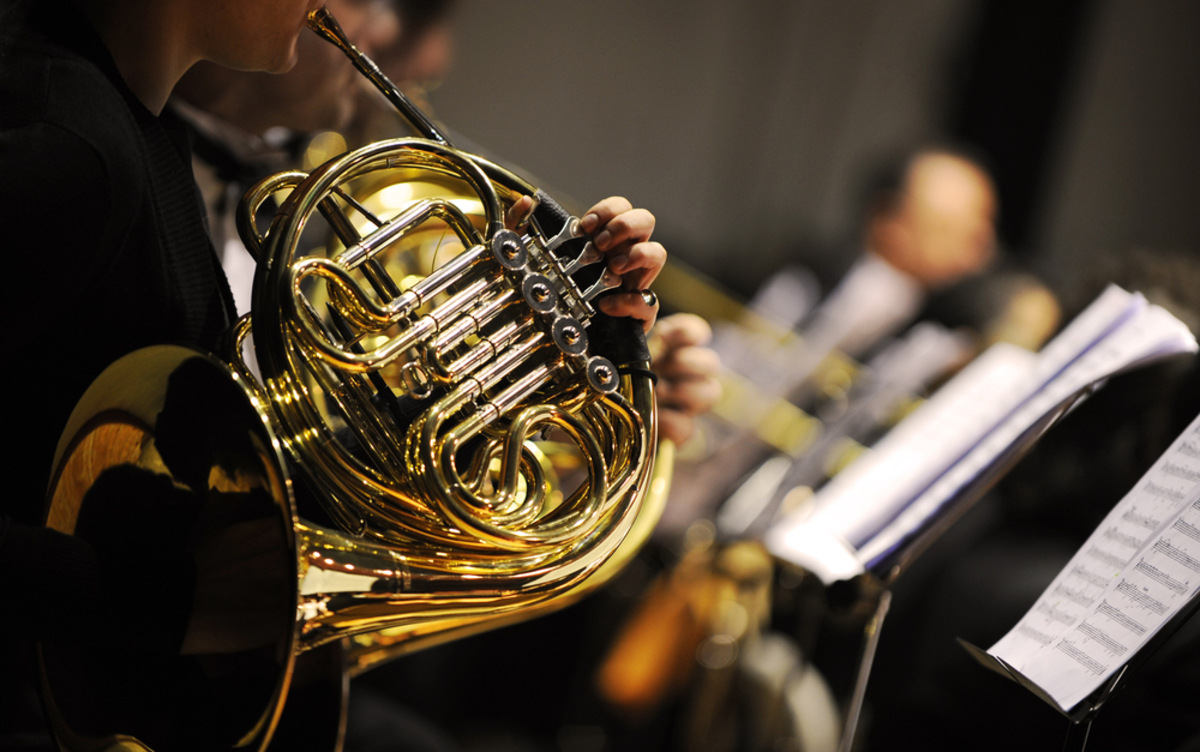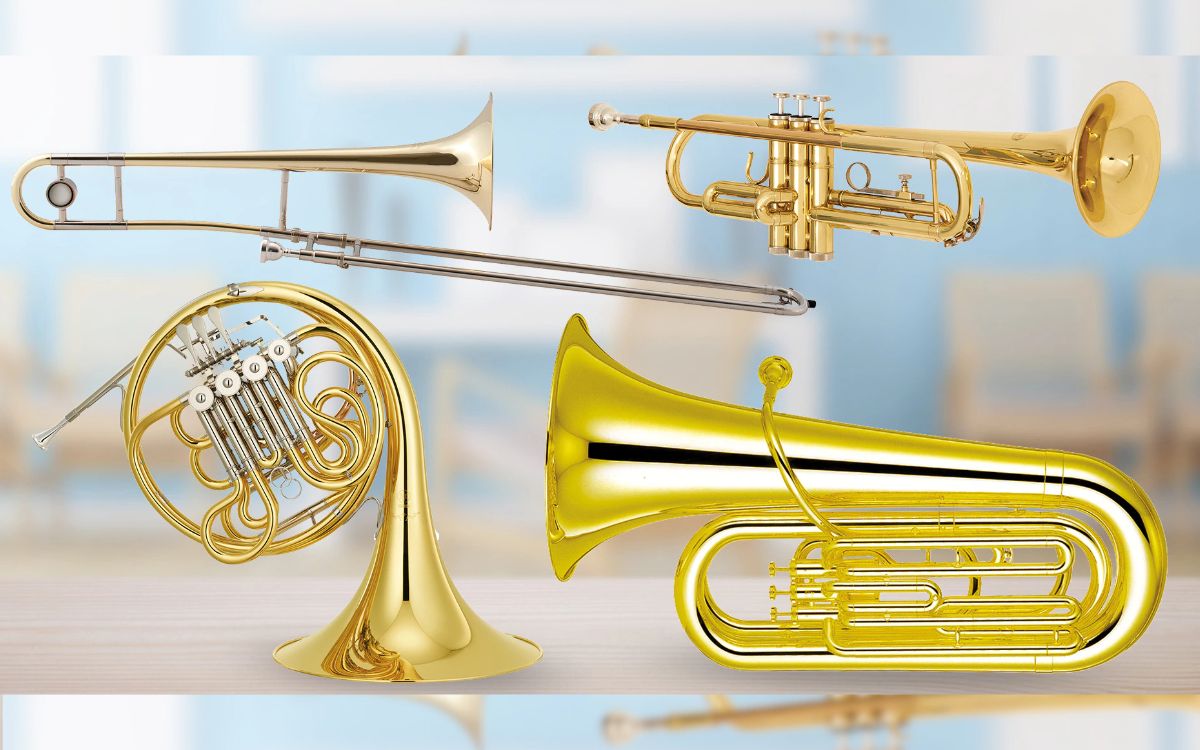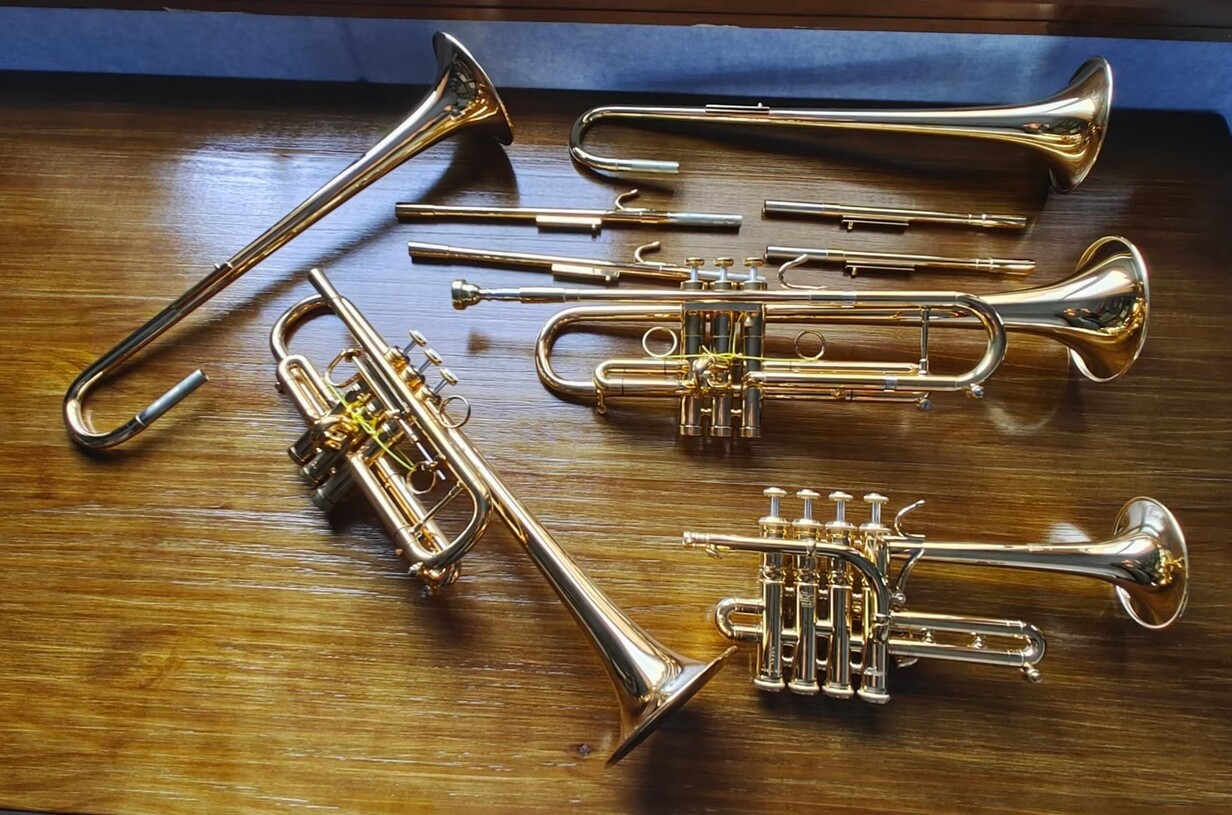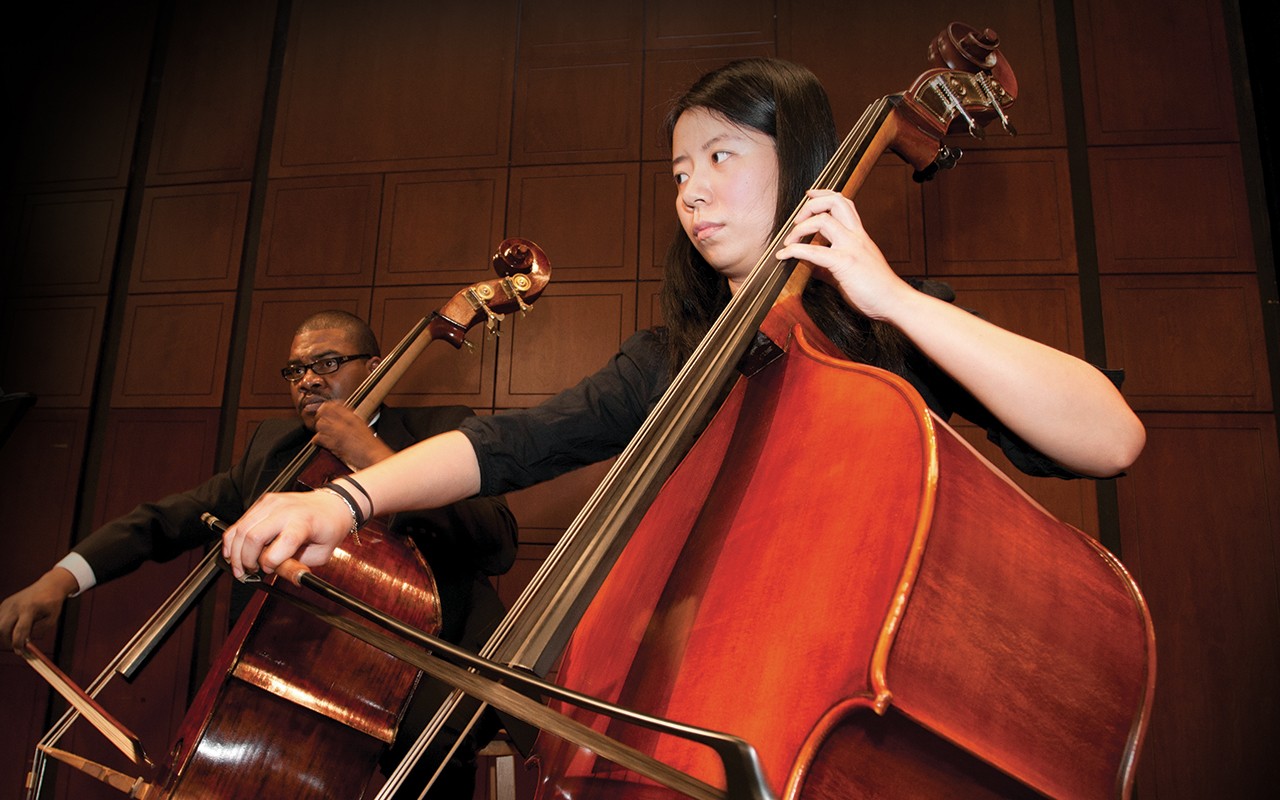Home>Instruments>Bass>What Is The Bass Instrument


Bass
What Is The Bass Instrument
Modified: February 15, 2024
Discover the essence of the bass instrument and its role in music. Explore the history, types, and techniques associated with playing the bass.
(Many of the links in this article redirect to a specific reviewed product. Your purchase of these products through affiliate links helps to generate commission for AudioLover.com, at no extra cost. Learn more)
Table of Contents
Introduction
The Bass instrument is a powerful and essential component of modern music. Its deep, resonant tones provide the foundation and rhythmic groove that drives many genres, including rock, jazz, funk, and reggae. The Bass instrument adds depth, richness, and weight to a musical arrangement, creating a sense of unity and cohesion.
Whether it’s the thumping bassline in a rock song, the walking bass in a jazz composition, or the driving bass groove in a funk track, the Bass instrument plays a vital role in defining the overall sound and feel of a piece of music. From the foundational role in a band or ensemble to its importance in solo performances, the Bass instrument has etched its place in the history of music.
With its origins dating back centuries, the Bass instrument has undergone numerous transformations and advancements throughout history. From its early iterations as a simple acoustic instrument to the electrified versions used today, the Bass instrument has evolved to cater to the changing needs and preferences of musicians.
This article will explore the various aspects of the Bass instrument, including its definition, history, different types, anatomy, playing techniques, and its role in music. We will also highlight some notable bass players who have made significant contributions to the instrument’s development and popularity. Whether you’re a musician, music lover, or just curious about the world of bass, this article will serve as a comprehensive guide to understanding the ins and outs of this incredible instrument.
Definition of the Bass Instrument
The Bass instrument is a low-pitched musical instrument that plays the lowest notes in an ensemble or band. It is specifically designed to produce deep, resonant tones that add a powerful presence to the overall sound. The Bass instrument is characterized by its long neck, large body, and thick strings, which allow for the production of low frequencies.
Traditionally, the Bass instrument is considered a member of the string family. However, with advancements in technology, there are now electric and electronic versions of the Bass instrument, expanding its range and capabilities. These electric bass guitars often use pickups and amplification systems to enhance and shape the sound.
The Bass instrument serves a distinctive role in music by providing the harmonic foundation and rhythmic support. It is responsible for establishing the pulse and groove of a piece, allowing other instruments or vocals to build upon it. The deep, resonant tones of the Bass instrument create a sense of fullness and help to establish the overall mood and feel of a composition.
Bass instruments come in various forms and sizes, including the upright bass (also known as the double bass or contrabass), the electric bass guitar, the bass ukulele, and the bass synthesizer, to name a few. Each of these variations offers unique tonal qualities and playing techniques, giving musicians the flexibility to explore different musical styles and genres.
Overall, the Bass instrument is an essential component of modern music, providing power, depth, and rhythm to compositions of all genres. Its distinct sound and role in the musical ensemble make it a cornerstone of many musical arrangements, elevating the overall listening experience and contributing to the emotional impact of the music.
History and Evolution of the Bass Instrument
The history of the Bass instrument can be traced back centuries, with its roots deeply intertwined with the development of stringed instruments. The earliest forms of the Bass instrument can be found in various cultures across the world, such as the double bass in Europe, the shamisen in Japan, and the sarangi in India.
One of the earliest known appearances of a bass-like instrument in European music was the viola da gamba, a fretted, bowed instrument that emerged in the 15th century. As music evolved and orchestras grew in size, there was a need for an instrument that could produce even lower frequencies and provide a stronger foundation for the ensemble.
During the Baroque period in the 17th and 18th centuries, the double bass, or contrabass, as we know it today, began to take shape. It featured a larger body, a deeper resonance, and was played with a bow. The double bass became a standard part of the symphony orchestra, providing the essential low-end support for compositions.
In the early 20th century, with the emergence of jazz and popular music, the demand for a bass instrument with more projection and mobility increased. In response, the electric bass guitar was introduced in the 1930s. The invention of the electric bass revolutionized the music industry, as it allowed the bass player to be heard more clearly in amplified settings and provided greater flexibility in terms of sound shaping.
The electric bass guitar gained prominence in the 1950s and 1960s, especially with the rise of rock and roll. Musicians like James Jamerson, Jaco Pastorius, and Paul McCartney pushed the boundaries of bass playing with their innovative techniques and use of effects. This era saw the evolution of bass as a more melodic and virtuosic instrument, breaking away from its traditional rhythmic role.
With advancements in technology, the bass instrument continued to evolve. Modern bass synthesizers and digital bass instruments allow musicians to experiment with a wide range of sounds and textures. The development of new playing techniques, such as slap bass and tapping, further expanded the possibilities of bass playing.
Today, the Bass instrument continues to play a vital role in various genres of music, from classical to jazz, rock to funk, and everything in between. The rich history and evolution of the Bass instrument have paved the way for a diverse and dynamic instrument that shapes the landscape of modern music.
Different Types of Bass Instruments
The world of bass instruments is diverse, with various types available to cater to different musical styles and preferences. Here are some of the most common types of bass instruments:
- Upright Bass (Double Bass or Contrabass): The upright bass is the largest of the bass instruments and is typically played with a bow or plucked with the fingers. It has a deep, resonant sound and is commonly used in classical, jazz, and orchestral music.
- Electric Bass Guitar: The electric bass guitar was introduced in the 1930s and quickly gained popularity. It features a solid body, magnetic pickups, and is played using frets. The electric bass guitar is widely used in rock, pop, funk, and jazz music. It provides a versatile sound and can be amplified for larger performances.
- Bass Ukulele: The bass ukulele, also known as the U-Bass, is a compact instrument that resembles a small guitar. It is typically tuned in the same octave as the traditional bass guitar and provides a rich, warm sound. Its portable size and unique tone make it a popular choice for travel and intimate performances.
- Bass Synthesizer: The bass synthesizer is an electronic instrument that uses synthesis techniques to create bass sounds. It offers a wide range of tones, from classic analog bass to futuristic digital bass. Bass synthesizers are commonly used in electronic, techno, and experimental music.
- Bass Viol: The bass viol, also known as the viola da gamba, is an early form of bass instrument that dates back to the Renaissance era. It has a unique shape, multiple strings, and is played with a bow. The bass viol is often associated with early music and period instrument ensembles.
- Acoustic Bass Guitar: The acoustic bass guitar is similar in design to the traditional acoustic guitar but with a larger body and longer scale length. It produces sound acoustically, without the need for amplification. Acoustic bass guitars are used in a variety of musical genres, including folk, country, and unplugged performances.
- Bass Banjo: The bass banjo is a variant of the banjo that is tuned to the bass range. It has a deep, twangy sound and is commonly used in bluegrass and folk music. The bass banjo provides a unique flavor to the rhythm section of a band.
Each type of bass instrument offers its own distinct sound, playability, and tonal range. Whether you prefer the classic resonance of an upright bass, the versatility of an electric bass guitar, or the portability of a bass ukulele, there is a bass instrument to suit every musical style and preference.
Anatomy of a Bass Instrument
To truly understand a bass instrument and how it produces its distinctive sound, it is essential to familiarize ourselves with its anatomy. Here are the key components and their functions:
- Body: The body of a bass instrument serves as the main resonance chamber. It can be made of various materials, such as wood, fiberglass, or carbon fiber, which affect the instrument’s tone and overall weight.
- Neck: The neck is a long, slender piece attached to the body of the instrument. It is usually made of hardwood, such as maple or mahogany, and supports the fingerboard and strings.
- Fingerboard: The fingerboard, also known as the fretboard, is a flat, usually wooden surface that runs along the neck. It is marked with frets that divide the fingerboard into individual notes. Bass instruments can have fretted or fretless fingerboards, each offering different playing techniques and tonal characteristics.
- Headstock: The headstock is the top part of the neck, located at the opposite end from the body. It houses the tuning pegs or machine heads, which are used to adjust the tension and pitch of the strings. The headstock can vary in design and shape, giving each bass instrument its unique appearance.
- Strings: The strings on a bass instrument are responsible for producing sound. Most bass instruments have four strings, tuned in fourths, from low to high: E, A, D, and G. However, some instruments, like the extended-range bass or bass guitars, can have more strings, providing a wider tonal range and versatility.
- Pickups: Electric bass instruments feature pickups, which are magnetic devices located under the strings. Pickups detect the string vibrations and convert them into electrical signals that can be amplified. Different pickup types, such as single-coil or humbucker, produce distinct tonal qualities and affect the overall sound of the instrument.
- Bridge: The bridge is a component that supports the strings and transmits their vibrations to the body of the instrument. It can be made of metal, wood, or synthetic materials. The bridge also allows for adjusting the height and intonation of each string, ensuring proper playability and sound quality.
- Controls: On electric bass instruments, there are typically control knobs or switches that adjust volume, tone, and pickup selection. These controls allow the player to shape the sound and tailor it to suit different musical styles and preferences.
- Strap Buttons: Strap buttons are small metal or plastic parts attached to the body of the instrument. They provide a point of attachment for a guitar strap, allowing the player to comfortably hold and play the bass while standing.
- Output Jack: The output jack is the connection point where the bass instrument can be plugged into an amplifier or audio system. It allows the electrical signals from the pickups to be amplified and heard through speakers.
Understanding the anatomy of a bass instrument helps musicians appreciate the instrument’s construction, functionality, and potential for creating a wide range of sonic possibilities. Whether you are a player or an enthusiast, being familiar with the various components of a bass instrument enhances your overall understanding and appreciation of its unique characteristics.
Playing Techniques for Bass Instruments
Playing the bass instrument involves more than just plucking or bowing the strings. It requires a combination of techniques to produce a variety of sounds and articulations. Here are some common playing techniques for bass instruments:
- Fingerstyle: Fingerstyle, also known as fingerpicking, is a technique where the strings are plucked using the fingers instead of a pick. This technique allows for more control and precision in producing notes and is commonly used in genres like jazz, blues, and fingerstyle acoustic music.
- Plectrum Technique: The plectrum, or pick, is a small piece of plastic or metal that is held between the fingers and used to strike or strum the strings. This technique offers a more percussive and aggressive sound and is often used in rock, punk, and metal music.
- Slap and Pop: Slap and pop technique involves using the thumb to strike or slap the strings while the other fingers flick or pop the strings. This technique creates percussive and funky sounds and is commonly associated with genres like funk, R&B, and slap bass solos.
- Tapping: Tapping is a technique where the player uses their fingers to tap the strings against the fretboard, producing a rapid and melodic sound. It is often combined with other techniques and is popular in genres like rock, metal, and progressive music.
- Double Stops: Double stops involve playing two notes simultaneously on adjacent strings. This technique adds richness and harmony to the bassline and is commonly used in jazz, country, and classical music.
- Chords and Arpeggios: Chords and arpeggios are techniques where multiple notes are played together to create harmonies. Bassists use these techniques to add texture and complexity to their playing, especially in jazz, fusion, and contemporary styles.
- Slides: Slides involve smoothly transitioning from one note to another by sliding the finger along the string. This technique adds a fluid and expressive quality to the bass playing and is commonly used in blues, rock, and soul music.
- Muting: Muting is a technique where the player lightly touches the strings with the palm or fingers to dampen the sound. This technique is used to create a tighter and more controlled bassline, particularly in funk, reggae, and pop music.
- Harmonics: Harmonics are produced by lightly touching certain points on the string while plucking it. This technique creates bell-like tones and is often used to add ethereal or percussive effects to the bassline.
- Bowing: Bowing is a technique commonly used on upright basses where a bow is drawn across the strings to produce sustained and smooth sounds. This technique is prevalent in classical music, orchestras, and certain jazz styles.
These playing techniques offer a range of expressive possibilities for bass players. By mastering and combining different techniques, bassists can create a variety of tones, dynamics, and textures, adding depth and personality to their musical performances.
Role of the Bass Instrument in Music
The role of the bass instrument in music is crucial, as it provides the foundation, rhythm, and harmonic support for the overall composition. Here are some key aspects of the bass instrument’s role in music:
Foundation and Groove: The bass instrument serves as the backbone of the rhythm section, providing a solid foundation for the entire ensemble. Its deep, low-pitched tones establish the pulse, groove, and overall rhythmic feel of a piece. The bass instrument holds the other instruments together, ensuring they stay in sync and maintaining the overall cohesion of the music.
Harmonic Support: The bass instrument plays a vital role in defining the harmony of a composition. Its low frequencies help establish the root notes and the chord progressions that define the tonal center of the music. The bass instrument provides a strong harmonic framework, allowing other instruments to build melodies and harmonies on top of it.
Dynamic and Emotional Impact: The bass instrument contributes to the dynamic range and emotional impact of a piece. By controlling the volume, attack, and sustain of the notes, the bass instrument can create a sense of tension, release, and anticipation in the music. It adds depth, richness, and intensity to the overall sound, enhancing the emotional impact and creating a more immersive listening experience.
Improvisation and Soloing: While the bass instrument is primarily known for its role as a foundational instrument, it also has the potential for soloing and improvisation. Skilled bass players can showcase their technical abilities and creativity by taking melodic solos or adding embellishments to the bassline. This versatility allows the bass instrument to step into the spotlight and contribute to the musical conversation in a unique way.
Interaction with Other Instruments: The bass instrument interacts and communicates with other instruments in an ensemble. It forms a rhythmic and harmonic connection with the drums, creating a tight and powerful rhythm section. The bass instrument also collaborates with the melodic instruments, such as guitars, keyboards, and horns, by providing a solid harmonic foundation for their melodies and improvisations.
Genre-specific Roles: The role of the bass instrument can vary depending on the genre of music. In rock and pop music, the bass often plays a more noticeable and melodic role, creating catchy basslines that add complexity to the song. In jazz, the bass takes on a more improvisational and supportive role, providing a rhythmic and harmonic framework for the other musicians to build upon. Each genre has its own expectations and possibilities for the bass instrument’s role.
Overall, the bass instrument is a fundamental and indispensable element in music. Its rhythmic and harmonic contributions provide a solid foundation, while its ability to add depth, dynamics, and emotional impact enriches the musical experience. Whether driving the groove, supporting the harmony, or taking melodic solos, the bass instrument plays an integral part in shaping the sound and feel of a composition.
Famous Bass Players
Throughout the history of music, there have been numerous bass players who have made significant contributions to the development and evolution of the instrument. Here are just a few of the many famous bass players who have left a lasting impact:
- James Jamerson: Known as the “Father of Motown Bass,” James Jamerson was a highly influential bass player in the 1960s and 1970s. He played on countless Motown hits with his melodic and innovative bass lines, and his groove and sense of rhythm set a new standard for bass playing.
- Jaco Pastorius: Jaco Pastorius is widely regarded as one of the greatest electric bass players of all time. He revolutionized the instrument with his virtuosic fretless bass technique, melodic solos, and jazz fusion compositions. His work with Weather Report and his self-titled solo album showcased his unparalleled technical skills and musicality.
- Paul McCartney: As the bassist for the legendary band The Beatles, Paul McCartney played a pivotal role in shaping the sound of popular music. His melodic bass lines and inventive playing style added depth and creativity to the band’s songs, setting a new standard for bass playing in rock music.
- Victor Wooten: Victor Wooten is a masterful bass player known for his technical prowess, innovative playing techniques, and unique approach to the instrument. His virtuosic solos, intricate basslines, and use of harmonics have earned him the respect and admiration of bass players worldwide.
- John Entwistle: As the bassist for The Who, John Entwistle was known for his powerful and melodic bass playing. His complex bass lines were an integral part of The Who’s dynamic sound and helped redefine the role of the bass in rock music.
- Stanley Clarke: Stanley Clarke is a highly influential bassist known for his incredible technique and versatility. He seamlessly blends elements of jazz, funk, and fusion in his playing, and his groundbreaking albums like “School Days” demonstrated the vast capabilities of the bass as a lead instrument.
- Flea: Flea, the bassist of the Red Hot Chili Peppers, is known for his energetic and funk-infused bass playing. His unique style, incorporating slap bass and percussive techniques, helped define the sound of the band and influenced a generation of bass players.
- Charles Mingus: Charles Mingus was a legendary jazz bassist, composer, and bandleader. His complex and innovative bass playing combined elements of blues, bebop, and free jazz, pushing the boundaries of the instrument and influencing generations of jazz musicians.
- Carol Kaye: Carol Kaye is a pioneering female bass player who made significant contributions to the music industry. She played on countless recordings as a session musician, including iconic songs by The Beach Boys, The Supremes, and Frank Sinatra, shaping the sound of popular music during the 1960s and beyond.
- Geddy Lee: Geddy Lee, the bassist and vocalist of the progressive rock band Rush, is renowned for his technical proficiency and melodic basslines. His intricate playing style and distinctive tone have influenced generations of bass players in the rock and progressive rock genres.
These are just a few examples of the many talented and influential bass players who have made their mark on the world of music. Their contributions, techniques, and unique styles have not only shaped the role of the bass instrument but have also inspired countless aspiring bass players to explore new horizons in their own playing.
Conclusion
The Bass instrument holds a vital position in the world of music, providing the foundation, rhythm, and harmonic support that drives a composition. Its deep, resonant tones add depth, richness, and emotional impact to various genres, ranging from rock to jazz, funk to reggae.
Throughout history, the Bass instrument has evolved from its early predecessors to the diverse array of instruments we see today. From the acoustic double bass to the electric bass guitar and beyond, each variation offers unique tonal qualities and playing techniques. The Bass instrument has adapted to the changing needs and preferences of musicians, allowing for greater versatility and experimentation.
Understanding the anatomy of a Bass instrument helps musicians appreciate its construction and functionality, while knowledge of playing techniques enables players to explore a wide range of sounds and styles. The Bass instrument’s role in music is multi-faceted – from establishing the rhythmic pulse and harmonic foundation to interacting with other instruments and contributing to the overall dynamics and emotional impact of a composition.
Many renowned bass players have left indelible marks on the instrument’s history, pushing the boundaries of what is possible with their innovative techniques and creative approaches. From James Jamerson’s influential groove to Jaco Pastorius’ virtuosic solos, these players have inspired generations of bassists and shaped the trajectory of the instrument in popular music.
In conclusion, the Bass instrument is an indispensable component of modern music. Its deep, resonant tones and rhythmic playability make it a captivating and essential part of any musical ensemble. Whether holding down the groove, providing harmonic support, or taking melodic solos, the Bass instrument continues to shape the musical landscape, enriching compositions and captivating audiences worldwide.











